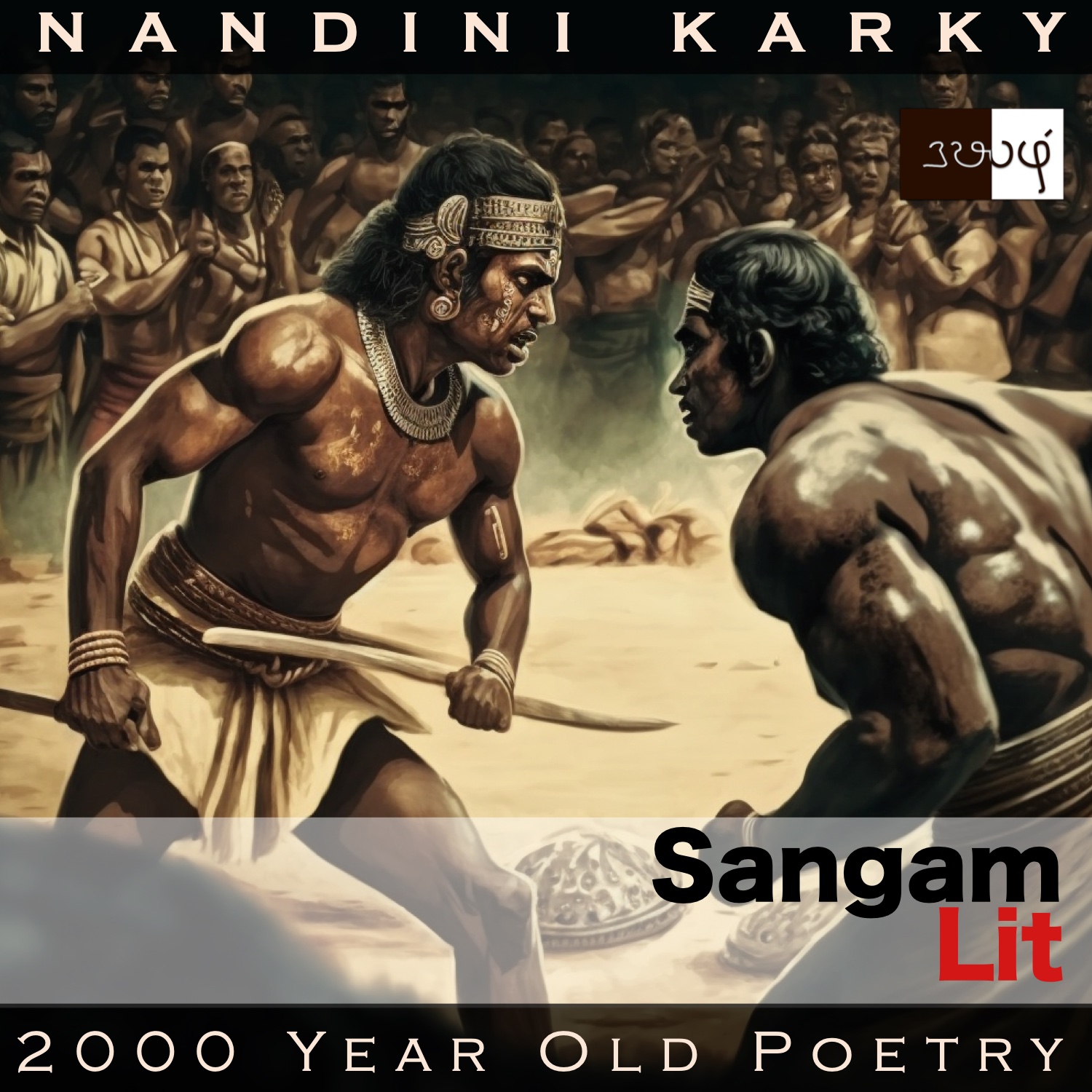Podcast: Play in new window | Download
Subscribe: Apple Podcasts | Spotify | Amazon Music | Android | iHeartRadio | TuneIn | RSS | More
In this episode, we hear of the power and skill of a royal, as portrayed in Sangam Literary work, Puranaanooru 80, penned about the Chozha King Poravai Kopperunarkilli by the poet Saathanthaiyaar. The verse is situated in the category of ‘Thumbai Thinai’ or ‘battle of two kings’ and talks about the impressive victory of this king in hand to hand combat.

இன் கடுங் கள்ளின் ஆமூர் ஆங்கண்,
மைந்துடை மல்லன் மத வலி முருக்கி,
ஒரு கால் மார்பு ஒதுங்கின்றே; ஒரு கால்
வரு தார் தாங்கிப் பின் ஒதுங்கின்றே
நல்கினும் நல்கான் ஆயினும், வெல் போர்ப்
பொரல் அருந் தித்தன் காண்கதில் அம்ம
பசித்துப் பணை முயலும் யானை போல,
இரு தலை ஒசிய எற்றி,
களம் புகு மல்லற் கடந்து அடு நிலையே.
From the series of songs on the Pandya king, we now turn to a Chozha king. The poet’s words can be translated as follows:
“At Aamoor, renowned for its sweet and thick toddy, subduing the enormous strength of a mighty warrior, he stands with one leg bent over the opponent’s chest and the other leg, deflecting the enemy’s tactics, bent behind his back. Whether he is pleased or he is not, the unconquerable Thithan of many victorious battles, must see the way, akin to how a hungry elephant feeds on bamboo, he strikes and breaks both the head and the legs, thereby attacking and ending the life of the warrior who entered the field.”
Time to explore the nuances. The poet starts by mentioning what’s great about the town of Aamoor, which happens to be the taste and texture of its toddy. Moving from pleasure to sport, the poet paints a striking portrait of two warriors in a wrestle with one gaining the upper hand, as he stands pinning the other down with one of his legs bent at the opponent’s chest. At the same time, the other leg of the winning person is bent behind the back of the opponent, stopping him from any further tactics. Freezing this image, the poet now says whether the famous Chozha king Thithan likes it or not, he must see this moment as that winning king breaks both extremities of the enemy soldier at one go, akin to how an elephant in hunger breaks a bamboo stalk.
So, who is this winning warrior and why must some Chozha king take in this image of might and strength? The winning warrior is the protagonist of the verse, the Chozha king Kopperunarkkilli and the other Chozha Thithan, who must watch it, is none other than Kopperunarkkilli’s father. Some sources indicate there had been a tussle between father and son with the son going off to rule a town of his own and now the poet tries to paint a picture of the son’s great strength to impress that victorious Chozha king. Be it in fictional stories in movies or in history, the dynamics between father and son is something that has been analysed and reflected upon a lot. Owing to patriarchy, there’s always a sense of subtle struggle between two generations of men, and we can appreciate this especially when great power is at stake. Interesting to see a subtle hint of such a conflict in Sangam history through the words of this ancient verse!




Share your thoughts...